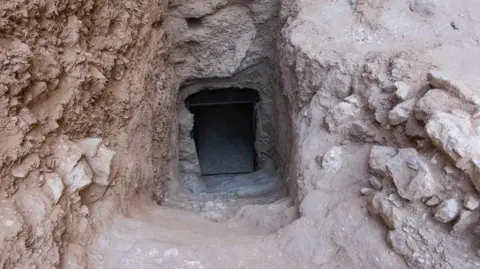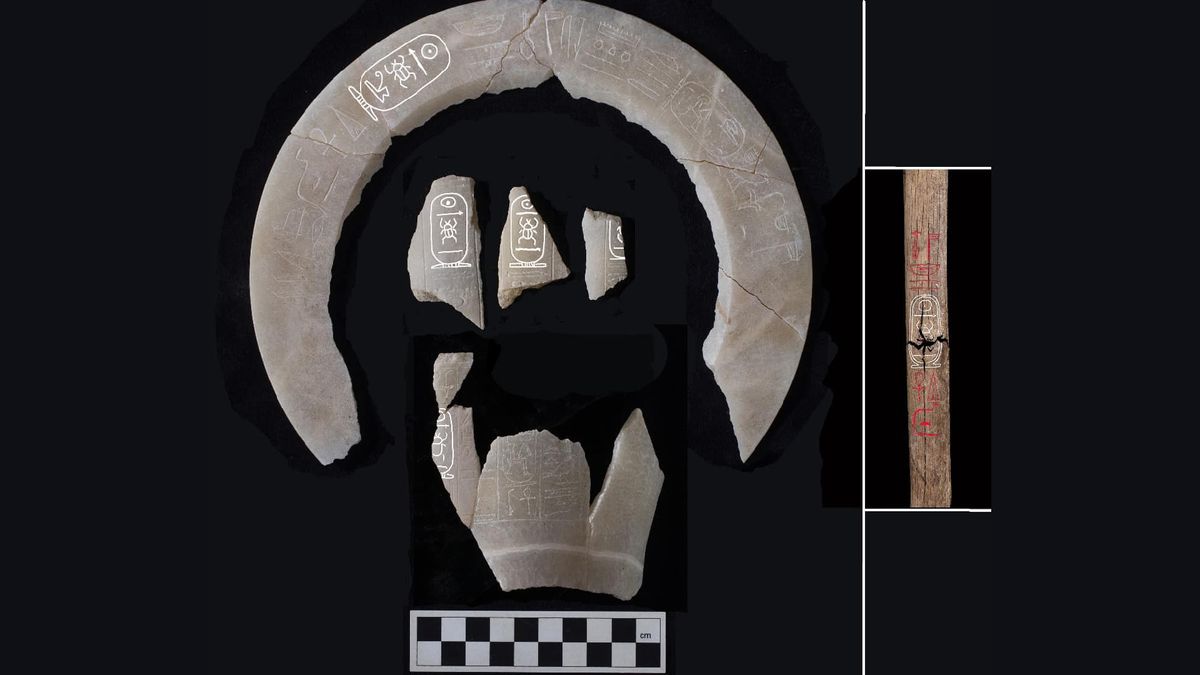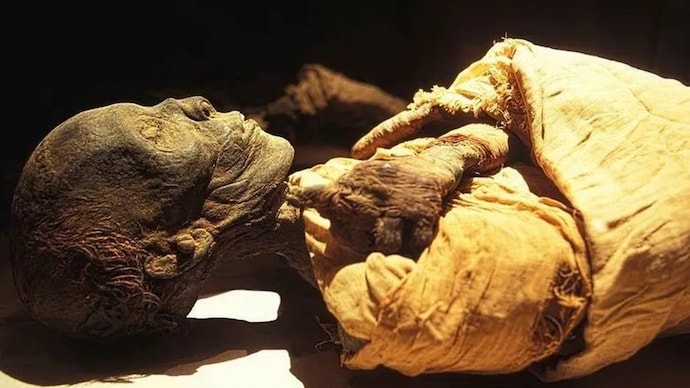In 2022, an entrance and center corridor of an ancient Egyptian tomb were initially discovered and assumed to belong to an ancient wife of the Egyptian kings due to its proximity to the tombs of other ancient Egyptian wives in the area, including the tombs of Queen Hatshepsut, King Thutmose 3’s wives, etc.
 <– This is the tomb’s discovered entrance, which was later found to hold King Thutmose the Second.
<– This is the tomb’s discovered entrance, which was later found to hold King Thutmose the Second.
In later years, it was discovered that this tomb belonged to King Thutmose the Second himself. (As found by the Supreme Council of Antiques and the New Kingdom Research Foundation, and being led by the British excavation) As this discovery was made, even those who located this tomb were surprised, as this specific area, as said before, was mainly dedicated to the wives and women of ancient Egyptian Times.
In response to the odd placement of this Kings tomb, Plers Litherland, a field director of New Kingdom Research Foundation, states, “The tomb is situated in a poorly-chosen place beneath two waterfalls and at the bottom of a slope down which water would have (and did) pour in the much wetter weather of the 18th dynasty.” In this statement, Litherland expands on the more specific placement of this tomb, which is abnormal as the Kings would typically be in a more orchestrated and proper area for someone of such royal status during that ancient time.
Litherland also briefly described this tomb to the BBC: “Part of the ceiling was still intact: a blue-painted ceiling with yellow stars. Blue-painted ceilings with yellow stars are only found in kings’ tombs.”
Investigators knew that this tomb was, in fact, one of a king because of the “alabaster jars inscribed with his name” (CNN) and the pieces of plaster with the engraved names of his half-sister and/or his wife, known popularly as Queen Hatshepsut.
 Some of the artifacts and pieces discovered in the tomb can be seen with inscriptions.
Some of the artifacts and pieces discovered in the tomb can be seen with inscriptions.
Although it cannot be confirmed, researchers assume that King Thutmose the Second reigned from 1493 to 1479 BC.
Additionally, because this tomb was buried under a waterfall, all the artifacts had either been damaged by flooding or moved by the water. However, some of the fragments of the tomb that were found and able to be somewhat deciphered included blue inscription plaster, yellow star motifs, and even parts of the religious book of Amduat, which was found in most ancient Egyptian tombs of the time.
Overall, archeologists have claimed this finding of the ancient king Thutmose the Third to be one of the most significant ancient discoveries since the finding of King Tut’s tomb in 1922. It is being viewed as a ‘remarkable discovery’, and because of the lack of breakthroughs in the ancient world nowadays, this historical discovery has been looked at with even more significance and depth.
 Thutmose the Second’s objective was to preserve the mummy found in his ancient resting place, which is now in the Global Egyptian Museum.
Thutmose the Second’s objective was to preserve the mummy found in his ancient resting place, which is now in the Global Egyptian Museum.







